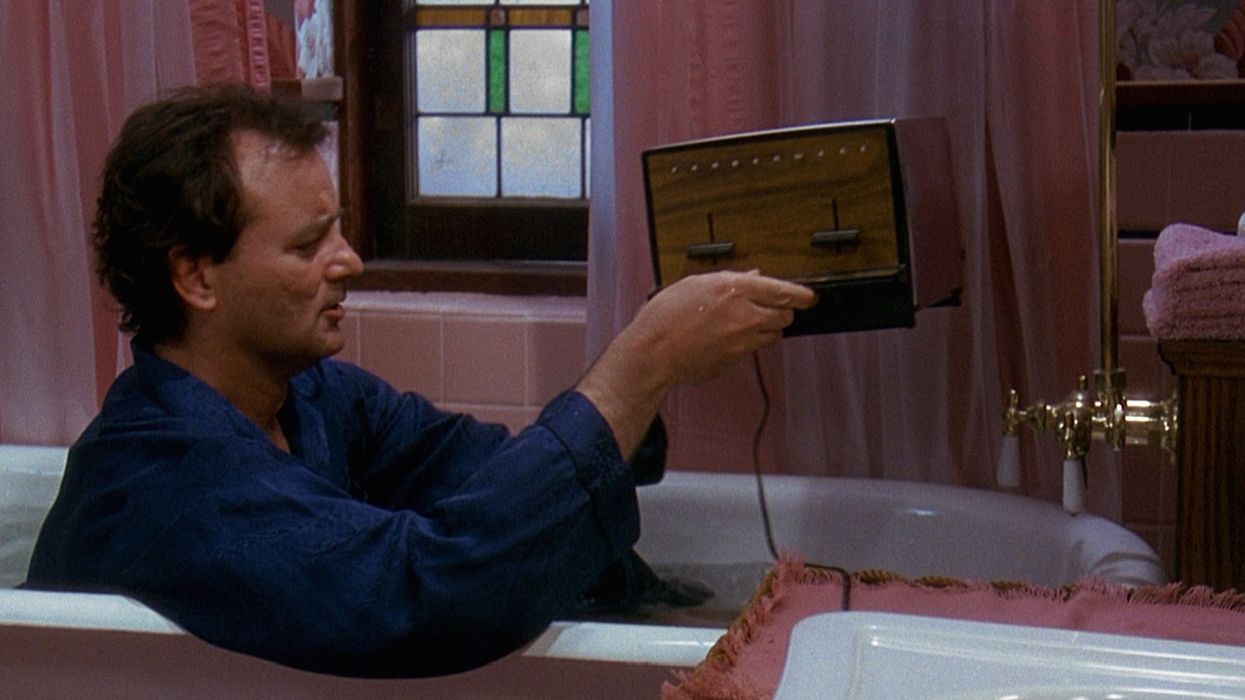
Repetition is a powerful literary device that filmmakers use to convey meaning, create rhythm, and enhance storytelling.
But how?
In this article, we’ll explore the definition of repetition in filmmaking and provide some examples of how it is used in the world of cinema.
Let’s dive in.
Writer’s Toolkit – What is the effect of.. Repetition? Under 3mins
www.youtube.com
Repetition Definition
Repetition is a literary, film, and TV device characterized by the deliberate use of certain elements, such as words, phrases, motifs, sounds, images, or actions, for a specific purpose. It is employed to emphasize, reinforce, or convey meaning, create rhythm, and enhance the overall impact of the work.
Repetition Across Mediums

The definition of repetition has a wide-ranging application in film, TV, and literature. So I thought it might be helpful to have a breakdown of repetition in each of these creative mediums:
Literature
In literature, repetition can take various forms, including:
- Word Repetition: The use of a word or phrase multiple times to emphasize a point, create rhythm, or evoke emotions. For example, in William Faulkner’s “The Sound and the Fury,” the word “time” is repeated throughout the novel to highlight its central theme.
- Motifs: Repeating a specific image, symbol, or theme throughout a story to reinforce its significance or thematic importance. In F. Scott Fitzgerald’s “The Great Gatsby,” the green light at the end of Daisy’s dock is a recurring motif symbolizing Gatsby’s unreachable dreams.
- Parallel Structure: Repetition of grammatical structures or sentence patterns to create a sense of balance and emphasis. Martin Luther King Jr.’s famous “I Have a Dream” speech uses parallelism to make his ideas more impactful.
- Anaphora: A specific type of repetition where a word or phrase is repeated at the beginning of successive sentences or clauses, often used in speeches and rhetoric for emphasis. “We shall not flag or fail. We shall go on to the end. We shall fight in France.”
Film
In film, repetition can be visual, auditory, or thematic:
- Visual Motifs: Repeating specific visual elements, such as colors, objects, or camera angles, to reinforce a theme or symbolize character development. For instance, the recurring image of the rosebud sled in Orson Welles’ Citizen Kane.
- Sound and Music: Repetition of certain sounds, musical motifs, or leitmotifs to establish mood, create tension, or evoke emotion. The iconic screeching violin in Alfred Hitchcock’s Psycho is a prime example.
- Action and Movement: Repetition of actions or movements to highlight character development or narrative progression. The repeated shots of Andy digging of the tunnel in the montage during The Shawshank Redemption.
TV
In television, repetition serves similar purposes as in literature and film:
- Dialogue and Catchphrases: Repeating specific lines of dialogue, catchphrases, or memorable quotes to create familiarity and engage viewers. Family Matters features Urkel’s iconic line, “Did I do that?!”
- Visual Patterns: Repeating visual motifs or imagery to establish a sense of continuity or to symbolize themes. The recurring imagery of crows in Game of Thrones represents various foreshadowing and symbolism.
- Narrative Structure: Repetition of narrative elements or story structures in episodes or seasons, such as flashback sequences in Lost or The Sopranos, can provide depth and resonance to the storytelling.
In all three mediums, repetition is a versatile tool used by creators to convey meaning, create connections, and deepen the impact of their work.
Whether it’s a repeated image, a recurring phrase, or a thematic motif, repetition is an essential element of storytelling that can engage, entertain, and provoke thought in the audience.
Examples of Repetition

- Inception (2010): Directed by Christopher Nolan Christopher Nolan’s Inception employs repetition as a central narrative device. The spinning top that protagonist Cobb uses to distinguish dreams from reality becomes a recurring motif. The film’s ending, which leaves the spinning top’s fate ambiguous, leaves audiences debating the film’s meaning and interpretation, making the repetition a pivotal element of the storytelling.
- 2001: A Space Odyssey (1968): Directed by Stanley Kubrick Stanley Kubrick’s iconic sci-fi masterpiece, 2001: A Space Odyssey, uses repetition in the form of the monoliths that appear at key moments in the story. These monoliths represent a mysterious and enigmatic force that guides human evolution. Their recurring presence underscores the film’s exploration of human progress and technological advancement.
- Groundhog Day (1993): Directed by Harold Ramis In this classic comedy, the protagonist, Phil Connors, finds himself reliving the same day over and over again. The repetition of events allows for character growth and self-discovery as Phil learns from his mistakes and ultimately transforms into a better person. This film brilliantly demonstrates how repetition can drive character development and narrative progression.
Repetition in filmmaking is a versatile and impactful tool that can be used to convey themes, create emotional resonance, and enhance the overall cinematic experience.
When employed thoughtfully, it can help the storytelling.
So try it out and let us know what you think in the comments.
Author: Jason Hellerman
This article comes from No Film School and can be read on the original site.
